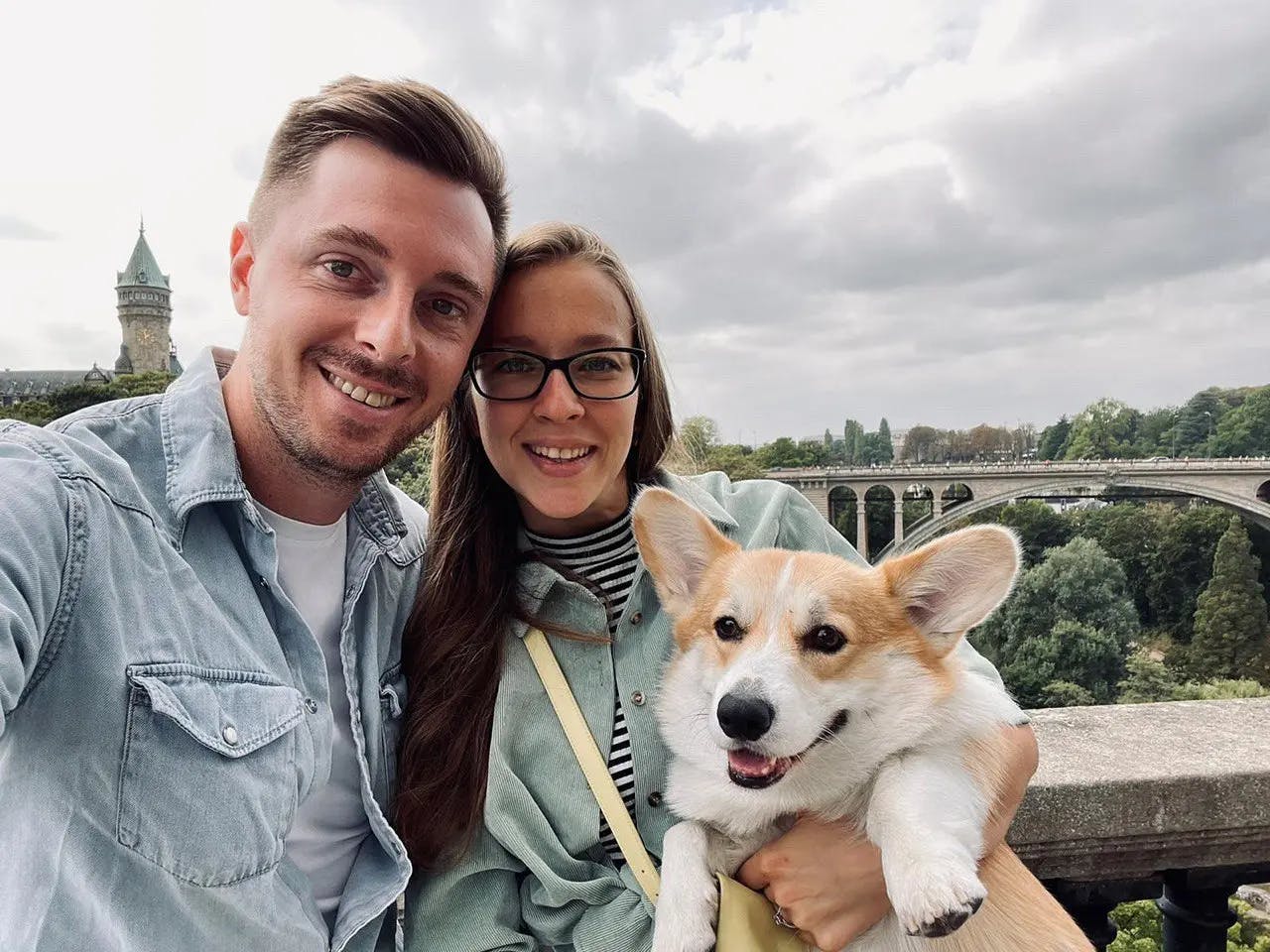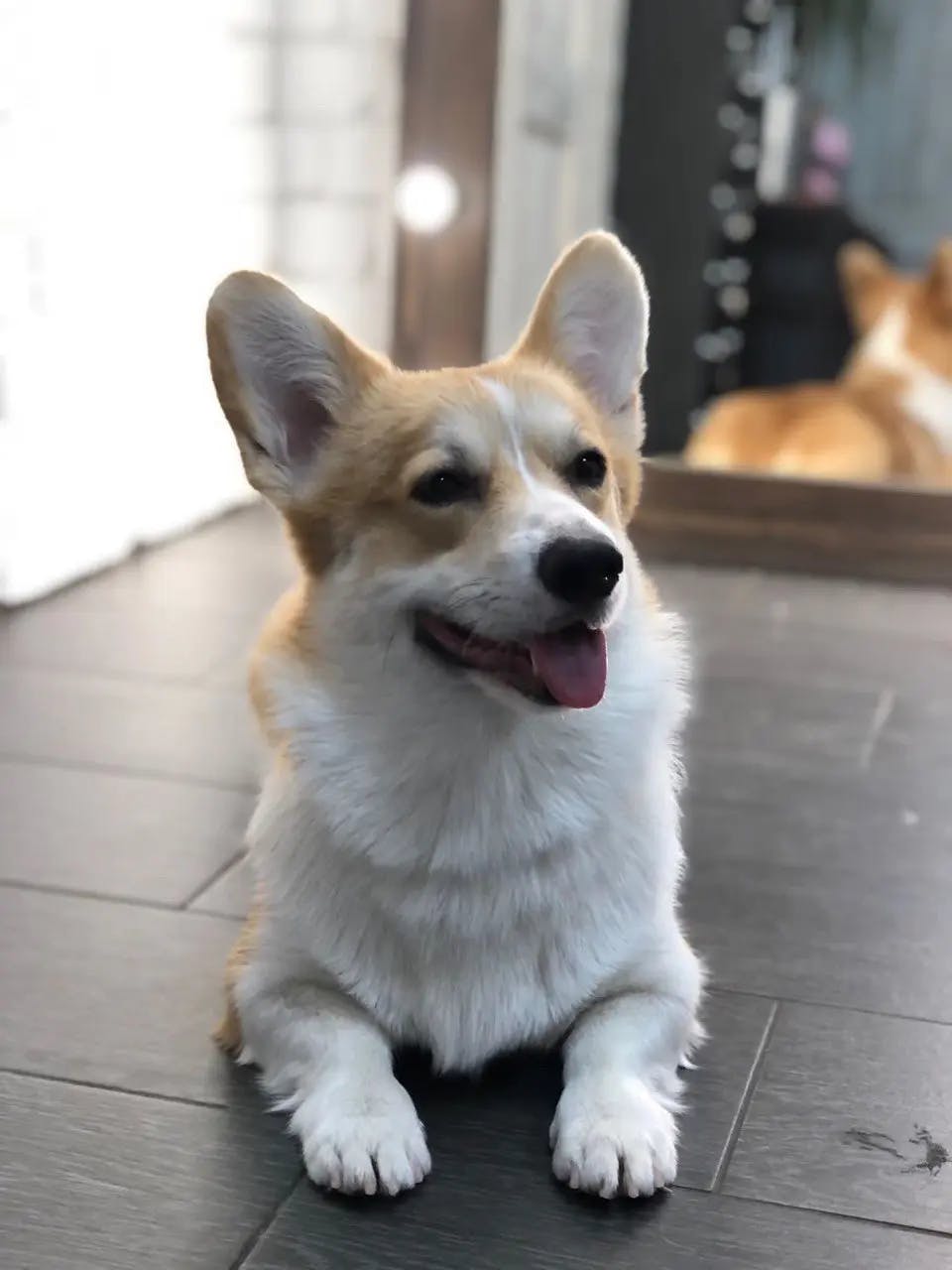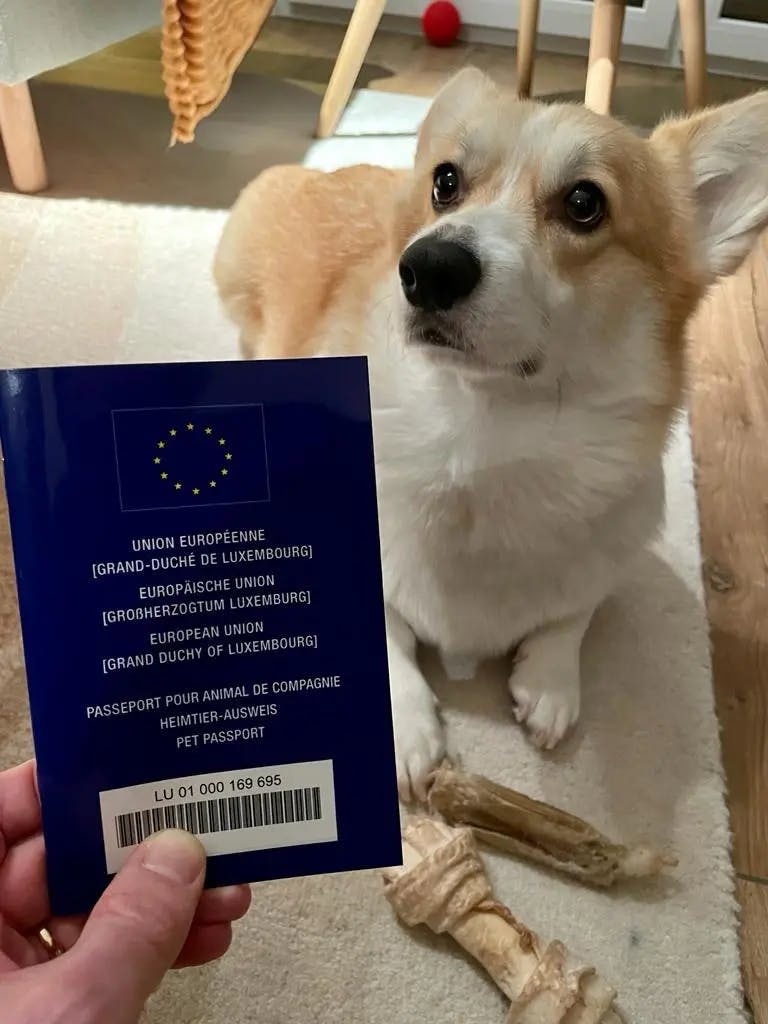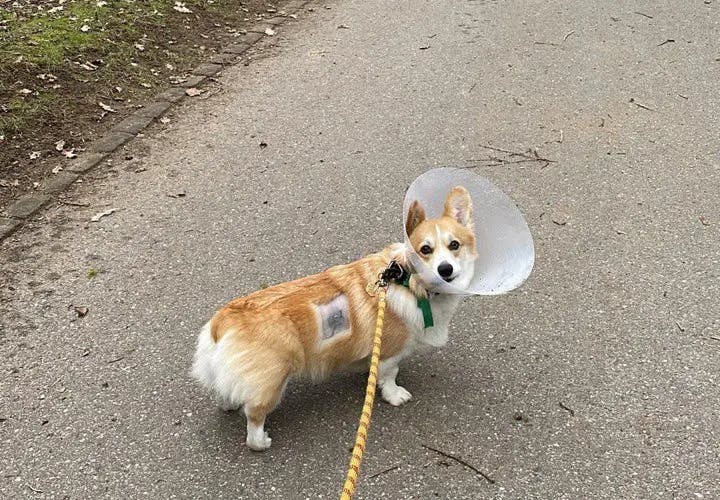How to move to Luxembourg with a dog


Moving abroad with a pet is quite a hassle and involves several mandatory steps. Veterinary services in different countries have their own rules and procedures. You should therefore prepare for your trip taking into account the specifics and requirements of the country you are travelling to.
Documentation requirements for a dog
The dog's name is Sawyer. He is a purebred Corgi (Welsh Corgi Pembroke, ed.). We decided between Sawyer and Athos. Now I remind my husband that Athos wouldn't have been a wallpaper chewer as a baby. He will be three in May, so he was vaccinated against rabies as we prepared to move.

When the hostilities started in February, I got him a chip as soon as possible, just in case. According to the rules, a dog or cat can only be chipped after the first vaccination. It was easier for us. He was an adult by then.
In addition, his vaccinations were due in July, so it was perfect timing. And because it wasn't his first vaccination, we didn't have to quarantine him. The fact that the EU does not require owners to have rabies serology titres also made things easier.
A titer is an analysis of the amount of antibody present in the blood of an animal. At least 0.5 IU/ml of antibody must be present in the animal's serum. The animal must be re-vaccinated and the test repeated at least 30 days later if the antibody titer to rabies virus is lower.
In general, documentation requirements depend on the country of entry. We would have had to check the requirements in Turkey and then in the EU if we had flown via Turkey, for example. But we went straight through. So there were no extra complications.
A dog must have an international veterinary passport showing all vaccinations, worming and other treatments.
We have a second passport because Sawyer got his first one stuck in his teeth. I filled it out myself straight away in English. When everything was ready, we went to Vnukovo to get a veterinary certificate to cross the border. This can be done at any airport and, if I am not mistaken, there is a veterinary station in Moscow and St Petersburg that issues such certificates, but it is best to check.
Certificates need to be issued at least a few days before travelling! Current requirements should be checked with the Veterinary Services.
How to transport a dog
My husband had an early flight and the company paid for his transfer, but only for him. So it was the dog and I travelling alone.
From Moscow we took the Sapsan train to St Petersburg. These trains have special carriages with separate seats for passengers with pets. You have to carry them on the train. So we bought him a Skudo cage. They are quite big and spacious. But the dog travelled in my arms all the way. Nobody said anything, there was another dog travelling next to us and everything was fine.
Skudo cages are a very popular request from various carriers. They are durable and ergonomic. They come in different sizes, which are indicated by a number. A certain number will fit dogs of different weights and sizes. Consult your vet for advice on this matter.
From St Petersburg, however, the journey was more interesting. I contacted several companies to find out what travel options were available. It was not possible to take the dog on the bus. I think the border checkpoint where the buses pass through doesn't allow animals to be checked. The reason for this is probably so that there are no delays in the flow of people. So I had to book a private transfer from my hotel directly to the airport in Helsinki, which I did.
There were several options. One company had a price of 35,000 roubles (about 332 euros, ed), another one — 90,000 (about 997 euros, ed). I chose the cheaper one, of course. But it still turned out to be a luxurious trip. I don't know if this is always the case. Maybe they just sent a driver who was available, but the dog and I drove in a Mercedes.

It was expensive, of course. But plane tickets in those days were outrageous. I wasn't able to go with the dog myself, either. I had my driving licence, but what would I do with the car, as no one would take it away? We decided that a transfer was the best option as there was no one to pick us up. In any case, it turned out to be a lot cheaper than the flight from Moscow.
The transfer turned out to be the most expensive. Flying from Helsinki to Paris is not very expensive in general. And my husband used miles. So it turned out to be quite cheap.
At the Finnish border they checked all the documents for Sawyer. The border guard did not even look at the dog — the certificates were enough for him.
When we got to the airport there was plenty of time before the flight, so I checked in early. I was told I didn't have to take my dog in yet. So I could go out for an hour. When we got back we met another girl with a dog. She asked me if I had any cage bolts. She had a dog as well, but it was quite a big one — bigger than Sawyer. Well, she had a cage that was bolted together with real bolts — strong metal ones.
I didn't have any bolts, of course. There were just latches on the cage itself, and I started to tighten them up in a hurry. Luckily, no one had checked anything at all.
Bolting is one of the most common requirements for flying. This helps to increase the strength of the cage and prevents accidental opening during flight. It is a good idea to check the requirements of your particular airline as part of your preparation.
Then they checked the dog's papers and sent us to a separate room to check the cage into the luggage. There I gave Sawyer a kiss and said goodbye. Then I went to board the plane.
I don't know what the temperature was like in the pet compartment, but when I went to pick up the dog in Paris, he jumped happily into my arms and looked quite healthy. He didn't seem to suffer from flying. Back in Moscow, on the vet's advice, I bought a tranquilliser for the dog. But I decided not to give it to him as he was calm anyway. By the way, we were on an AirFrance flight because the airline had a good reputation as a reliable and responsible airline.
Now a little bit about Paris. When I arrived, I couldn't find my pet for a long time. Everyone was pointing and saying: "Go this way, go that way". Finally, I got to the oversized cargo belt, and he actually came out to me on the cargo belt! There was a strong rope wrapped around his whole cage. I didn't do that, so I guess the staff at the airport in Helsinki must have done that.
One of the options an airline can use to further secure the cage is a safety rope. This is usually done when the carrier itself is not strong enough or, as in the case of the Lada, does not have any additional tie-down straps.
We were not asked for any documents at all. I think it was because the flight was from EU to EU. Then we took the train to Germany, because in the summer of 2022 there was no direct train connection between France and Luxembourg. On the train he sat on my lap, just like in the Sapsan. The only thing is that my husband read somewhere that there should be a muzzle. We bought one, but I don't remember putting it on. Well, just in case they asked for it. But nobody demanded anything and the dog behaved well.
And on the bus from Germany to Luxembourg, no one asked anything, no one demanded anything. We got there with the dog on our laps. This part of the trip was very relaxing.
How to find accommodation with a dog
This is not a trivial question. I've seen a lot of information in the chat and I've heard from people that it's very difficult to find accommodation with a dog in Luxembourg. And with a pet in general.
We started looking for flats when we were still in Moscow. There were a few times when they promised to send us a contract, but then they just kept quiet and that was it.
Finally we found an agent to accompany us. He has two dogs himself and he liked us as a couple. Of course we also sent a picture of Sawyer. Anyway, he did the negotiations with the landlord and vouched for us. We also had employment contracts to prove that we could keep and look after a dog. It was also a way of proving that we would be able to pay for any repairs that might be needed and so on.

But it's really a matter of luck. I can't make any recommendations. I know that many people have real problems finding accommodation. I wish that everything would be resolved as quickly and as well as possible.
How to register a dog in Luxembourg
When you arrive in Luxembourg, there are several stages to go through. We haven't even been through all of them yet.
First we went to the vet for a general check-up. Sawyer was given a complete check-up. What really surprised and amused me was that they even measured his blood pressure with a tiny tonometer. I've never seen anything like that for dogs before, only for humans. Cuteness squared.

Then the passport has to be replaced. We had an international passport, but not a European one. So the document has to be reissued. I'm not sure if this is a strict requirement. But with this passport he will definitely be in the European system. They will be able to identify him by his chip and return him to his owners if he gets lost.
It's not a quick process, so we went through a vet. They took all my documents and sent them all the way to Brussels. That is where the registration and processing takes place.
The next step is the insurance. A dog must be listed on your insurance policy in order to be officially registered in Luxembourg.
Then you must go back to the vet for a certificate that all your dog's papers are in order. I already have such a certificate. All I need to do is go to the Municipality and get registered.
Then the municipality will calculate the tax for the dog. I have to pay this tax once a year.
We don't know how much it will be yet. It depends a lot on where you live. So we will have to go to the council soon and get the receipt in the post.
And we shouldn't forget to get vaccinated. It is regulated in the same way here as it is in Russia. Once a year you have to get a vaccination against rabies. The animal must also have regular parasite treatment: tick pills, worming and so on.
The main difference is that you cannot buy these medicines in a normal pet shop — only in a veterinary clinic. They won't sell them without a prescription from the vet.
Is it really important to have pet insurance
We had an insurance claim. It happened one day in late February. My husband was returning from a walk with Sawyer. They were not far from a neighbour's house and it was quite dark. The neighbour has a huge dog. It is a Romanian Carpathian Shepherd.
Anyway, the dog weighs 65 kilos, is black and wasn't visible in the half-light of the street. Sometimes we hear it or see it in the neighbour's garden. But this time it was different.
The dog made a hole in the fence, went outside and waited for my husband. As he got closer, the dog lunged at Sawyer, grabbed him by the teeth and threw him to the side. My husband grabbed our dog and shouted at the dog. It went back out through the gnawed hole. Perhaps it was frightened by the man's threatening voice. Or perhaps it knew a few commands.
Another neighbour saw the whole thing, let my husband with a dog in and helped call the police. The police and my husband tried to call the neighbour. It turned out that the neighbour's bell hadn't been working for years. In any case, they left a note and then went to the hospital with the dog.
The doctor at the clinic examined the dog and gave him three injections. There was an anaesthetic, an antibiotic and something else, I think it was morphine. But she said she couldn't operate on the dog because the wound was on his chest, fur could get in, and there were lungs, heart, all that stuff.
There were two options — to go to Thionville and leave the dog overnight, or to go with him in the morning. We decided to go in the morning.
We were not allowed to feed Sawyer, only to give him water. We also allowed him to sleep in the room with us at night to monitor his condition. He usually sleeps in his own spot in the hall. At night I woke up to a terrible rumbling in his stomach — we feed him after a walk, so this time he went to bed quite hungry. It was very miserable for the baby.

In the morning we drove to the clinic and he was taken in for surgery. They shaved a square of hair off his side, patted him down, put on a 'cone of shame' (the ironic name for a post-operative collar for animals, ed) and gave him to us. It must have helped that the corgi has a thick undercoat. The wound was not very serious. If Sawyer had been a small dog, I dread to think what would have happened.
All these expenses, the operation, the medication, the trip to the clinic — everything was covered by the insurance. What is more, we were also reimbursed for the groomer's services. We weren't allowed to bathe Sawyer for a while after the operation. We wrote a claim and the insurance paid for him to go to the groomer
The neighbour came to see us the next day. He was very polite and apologetic. We think it was so we wouldn't have to report him to the police. The consequences could have been very serious. But we didn't. Everything ended well, and after all we were neighbours, we still lived next door to each other.
The police came and asked how we were and if everything was all right. The police also gave me a business card with the number of a detective on it, apparently. They told me to get in touch if I needed anything.
I hope my experience will help someone else moving. Cheers to your pets!
Learn more about moving to Luxembourg with a pet and other important topics in the knowledge library:
Share your stories with us. If you would like to tell us about moving to Luxembourg and about life here, please write to our editors via Telegram or email editorial@luxtoday.lu. One person's experience can help many.